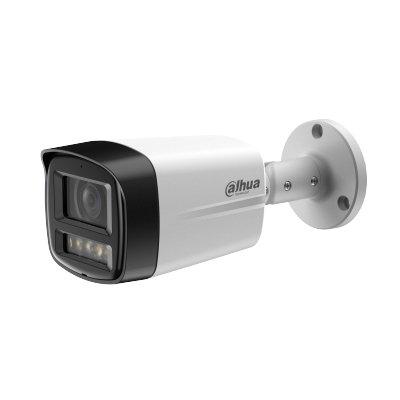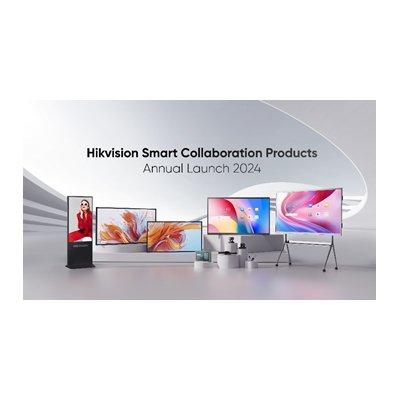| The video servers allow them to plug in any existing analog camera and convert it to digital for transmission |
Just a few short years ago Kaukauna Utilities, a provider of electrical power and drinking water in Kaukauna, WI had one camera. Just one. It was analog and not attached to any recording device. Today they have 18 IP camera domes and two IP video servers, with plans to expand.
Yet their financial outlay has been very small. Their expansion plans include buying off the-shelf computers and inexpensive cameras, but their technology is cutting edge. How did they do it?
Beta testing
One of Vicon’s Authorised Dealers, Excellence Electric Inc. in WI had approached Kaukauna with the possibility of designing the entire infrastructure around IP Domes. It just so happened that Vicon was looking for Beta sites in which to test their new products.
“We had an older analog camera [of theirs] that we investigated using several years ago,” says Frank Vander Wyst, system and operations technician for Kaukauna Utilities. “We liked the software that moved the camera, but we would have liked to have had it on our network. We begged Vicon: ‘We’ll be your test site. Let us test these cameras.’ We liked their product that much. We volunteered to work out some bugs for them.”
Of course, the relationship was a two-way street. “Vicon liked the fact that we had wireless connection out to our hydro sites,” Vander Wyst says. “We have a busy network control system, with phone systems on the same network – a lot of stuff happening. Our infrastructure for carrying data is Ethernet technology. We either have fiber or Cat 5 or wireless that goes to fiber and all comes back to the main office.”
KauKauna utilities
Once Kaukauna was Beta site approved, Excellence Electric, Kaukauna Utilities and Vicon worked in conjunction to install a total of 16 new SurveyorVFT IP outdoor color domes. “We have several facilities, including substations, hydro plants, underground reservoirs, and water towers,” Vander Wyst says. “Part of our need for cameras was for security: Who is coming and going day and night? The other was for operational needs, particularly in hydro plants, to verify river heights.”
"Vicon knew we had an Ethernet system, and didn’t know if it would work with their product" |
Besides the options of Coax, Fiber or Twisted Pair, these domes were fitted with an Ethernet connection built-in, bypassing any DVRs, which Kaukauna didn’t want. “We wanted to be able to use the PC,” Vander Wyst says. “We didn’t want to have to buy an expensive box. With this you just buy a PC and install the software on there and it will do all the recording for you.”
“We really feel that cameras on a network is the wave of the future. We had so many camera companies trying to sell us old analog cameras with coax. It would require a separate box that sits on the network. With this, we just bought a workstation. All the recording is done right there within the software.”
Being a Beta site is not without its hitches. “Vicon knew we had an Ethernet system, and didn’t know if it would work with their product,” Vander Wyst says. “They wanted to test our site. There were some things that we found out about our system as far as internal switches. We had too much on one. They were the wrong size.”
They learned some positive things, as well. “I think the big thing we learned is the ease of set-up. We’ve come to understand how it records and how we can play back. They were pretty up-front with everything we needed to know about what it did. We’ve learned the value of having it on a network and being able to install software on anyone’s computer within the network.”
Making technology last
Kaukauna still has the original analog camera that started it all. While not currently in use, they plan to reuse it with another of the technologies supplied by Vicon for Beta testing.
The VN-301T and VN-306T video servers allow them to plug in any existing analog camera and convert it to digital for transmission over the Ethernet network. After testing the VN-306T (which allows six analog cameras to be plugged in), Kaukauna bought that unit. “If you have a camera from an old system, all you have to do is run coax cable to this box, and it can be used on the network,” Vander Wyst explains. “It also has a control feature where you can use the pan-tilt-zoom of the analog camera.”
They intend to use their original analog camera with this unit, putting it out at a hydro plant that currently doesn’t have a camera, but does have Ethernet connection. The two stationary cameras they have from Vicon are also IP, and can also plug analog cameras into the back. While they have not mounted those yet, they have plans to use those to monitor doors in the main office, especially for after-hours.
"They feel like they know more of what is going on at the different sites, the comings and goings and activities of people" |
“These have a nice feature in that we don’t have to buy high-end cameras at every spot. Put in one nice camera, then we can buy cheaper ones and still be able to go over the network, rather than running cable from each camera back to the server,” Vander Wyst explains.
Positive changes
Overall, the changes Kaukauna has made in their video system have benefited them greatly, without setting them back financially.
“We see the difference in our operations,” Vander Wyst says. “They feel like they know more of what is going on at the different sites, the comings and goings and activities of people. There is more of a sense of control, rather than running blind. We had electronic data coming back and saying we are putting out this much and that much, but we didn’t know when an alarm sounds, is the place burning down, or is it a false alarm? This minimizes that as a question. It’s putting eyes out at a facility. We are here 24 hours a day, so it’s nice to know what is going on before having to call someone in.”
In addition, the technology saves information automatically to the hard drive, which can then be retrieved instantly or searched. “The only limit is on the size of the hard drive,” Vander Wyst says. “We are probably storing a week’s worth of information, which is fine for us. Then we can burn the information onto a CD for storage.”
In fact, the system has already been put to the test when a couple of would-be vandals jumped a fence. “We had an operator working at night, and they happened to notice two individuals jumping the fence at one of our hydro plants,” Vander Wyst says. “They called the police and the vandals were apprehended. We wouldn’t have known anyone was there without the camera system.”
In the future, Kaukauna plans to add cameras inside the office building, then add more fixed cameras for security purposes at all wells, hydro plants, towers and substations. Now that Kaukauna has laid the technology foundations, these additions should go smoothly and be cost-effective.


















